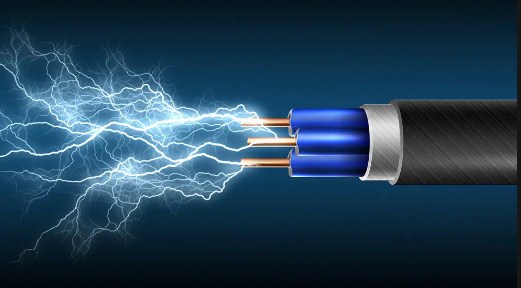Generally speaking, electricity has been a great asset to mankind. The manipulated flow of electrons is behind so much of how we live our lives. However, like many influential tools throughout history, it also bears the potential for great destruction. Under certain conditions, electrical currents can be, shall we say, less than friendly to human beings.
Therefore, several precautions have been taken over the years to prevent both soft and serious injury. A classic example is in the domestic wiring system found in most household buildings: electrons flow through metal circuit wires, which are grounded to avoid stray voltages reaching us and turning our bodies into conductors — ouch.
For a deeper understanding of what causes different electrical injuries, when these might occur, and how to avoid them, you’ve come to the right place. Here are the main types of hazards we may encounter when it comes to electrical appliances, and what we can do to stay safe.
Electric shock
The most easily recognizable hazard on this list, electric shocks happen when our bodies become part of a live circuit. For those of you who have forgotten from science class, we can quite easily conduct electricity in the right conditions — all it means is that an electrical current is able to flow through the body. Electric shocks happen when we come into contact with a voltage source, and the electrons in the current jump towards the body and pass through it.
This may not even require direct contact — current can also travel through the air, for instance, when making your hair stand on end or giving you that static electric sensation when touching a doorknob. Depending on the level of voltage, the consequences can vary wildly — shocks can be harmless, mildly or moderately painful. Powerful shocks that severely injure or become fatal are what is known as electrocution. Common causes include:
- Coming into contact with both conductors (this makes you part of the circuit).
- Acting as a path between an ungrounded conductor and the ground.
- Touching both electrical ground and the live wire.
How to avoid
As mentioned previously, most modern appliances have a failsafe in the form of this grounding (or earthing), so ensuring yours have these is key. As XP Power explains, depending on the appliance’s voltage level, earthing protection systems “serve to channel a faulty current securely into the earth and direct it away from people who may come into contact with it, with a circuit breaker, or fuse, stemming the flow of electricity into a defective circuit”.
Other tips include keeping water away from your appliances (water is a great conductor of electricity), turning off power when not in use, and keeping an eye out for damaged cords.
Electrical burns
While the terms ‘shock’ and ‘burn’ are often used interchangeably when referring to electrical hazards, their distinction is important to note. Burns can come from the same stimulus as electric shocks but are also influenced by other conditions that can easily occur at home or in the workplace. For example, thermal contact burn comes when touching hot surfaces from overheated conductors or other equipment with an electrical charge.
The UK government’s Health and Safety Executive explains how and why burns occur, and what makes them serious: “when an electrical current passes through the human body, it heats the tissue along the length of the current flow. This can result in deep burns that often require major surgery and are permanently disabling”. Unfortunately, these tend to heal rather slowly.
How to avoid
Similar to shocks, there are plenty of steps you can take to avoid electrical burns. You should, to start with, only use securely insulated wires in your home, while installing a ground fault circuit interrupter will also cut off the electrical flow of a current that has gone astray.
If you by chance ever encounter a fallen overhead power line, you should keep well away (at least 20 feet), as it is highly likely that they won’t be insulated, and you may get frazzled.
Arc flash and blasts
The danger of electrical arcing is more complex. In quite simple terms, this is what happens when electrical energy jumps unpredictably between connections, for example, between the air and the ground, or between voltage phases in the system. When a switch makes a sizzling or cracking sound — usually, when turning off or on — this is an indicator that an arc blast has occurred.
This type of short-circuiting is usually caused by a live conductor that is exposed, spurring the current to travel through the air until it reaches another conductor. An arc ‘flash’ occurs, therefore, when the impedance (electrical resistance) in a conductor’s environment breaks down. If this air resistance is low, but the voltage in the conductor is sufficient, it enables the latter to craft a pathway through the air and to the ground, or another conductor in near proximity.
The arc ‘blast’, a hazardous electrical explosion, is the effect of this low-impedance, whereas the arc ‘flash’ is the cause. The consequences can be dire, including intoxication from the explosive release of hot gases and serious damage to the senses, such as blindness and hearing damage.
How to avoid
Arc faults can be a result of damaged cables and are more dangerous in industrial scenarios. All professionals dealing with high-voltage machinery must go through requisite training to prevent this damage from occurring in the first instance.
Proper signage and labeling on panels, power lines, and machines is another essential tool for raising awareness of when to take precautionary and preventive actions. This might involve wearing PPE or de-energizing equipment before carrying out maintenance.
HussaiN is a full-time professional blogger from India. He is passionate about content writing, tech enthusiasts, and computer technologies. Apart from content writing on the internet, he likes reading various tech magazines and several other blogs on the internet. Email ID: arrowtricks.pvt@gmail.com


0 Comments